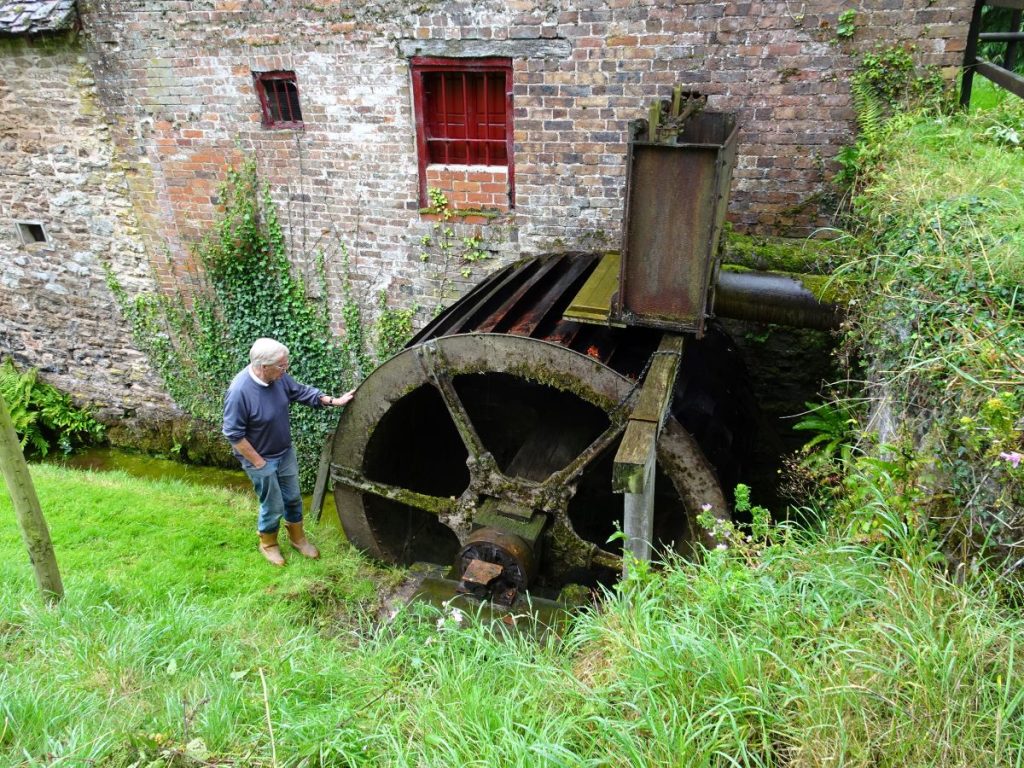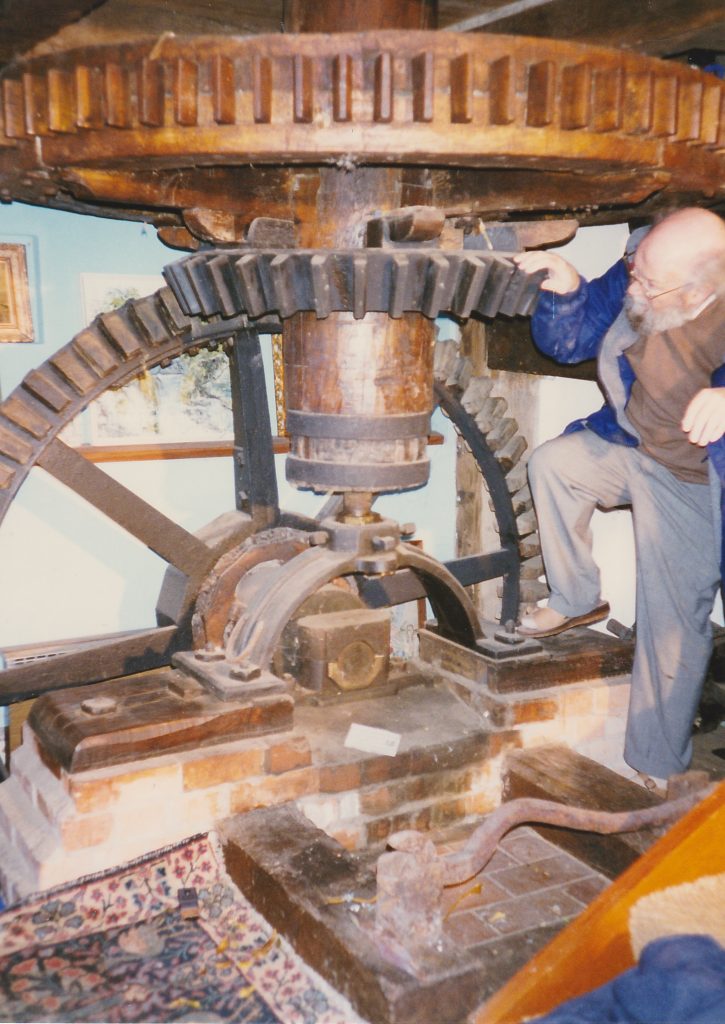Like the river, time has two faces: a force of progress that leaves erosion in its wake. Only by protecting records from its ravages can knowledge pass to future generations. We need your help to preserve waterpower records from erosion and protect…
The Flow of Knowledge

Waterpower experts and collectors knew that humanity did not ford the gap between watermills and water turbines in one leap. The weight of accumulated innovation surged into new inventions. Our staff and volunteers need your help to make their discoveries accessible to the next generation.

If watermills are the heart of communities, waterpower experts kept them beating. Tim Booth, a founder of the Midlands Mills Group, repaired Wrickton Mill in Shropshire, which he leased for 40 years. His extensive research and photographs from the Midlands shaped his numerous publications, which your support allows us to preserve in our library. Help us to carry on Tim’s work and keep the regional character of watermills alive in the Archive.
Regional watermill innovations converged, irrigating the pastures of technological advancement in the late nineteenth century. New turbines appeared in traditional mills manufactured by companies like Armfield and Co. Chesapeake Mill in Hampshire was one such site. Named after the USS Chesapeake, an American frigate captured during the War of 1812, the ship’s timbers were used in its construction. After 1913, the mill was fitted with an Armfield turbine to grind flour.


Tony Yoward, a former trustee of the Archive and member of the Hampshire Mills Group, recorded the history of Chesapeake Mill and saved Ledgers from Armfield, which the Archive now cares for. Along with his extensive notes on Hampshire and Dorset mills and millers, Tony allowed us to observe this technological shift towards turbines and remember the lives of the people who shaped it.

Your help will allow us to preserve this historical and genealogical record—information the next generation needs to navigate their future. Our recent volunteer, Jaahnavi, helped to catalogue the photographs of the watermill expert, Alan Stoyel. During her work experience, she found how the past and present meet in mills like Mapledurham Mill. A site recorded in the Doomsday Book, the mill now generates electricity through a turbine installed in 2011. We need your help to give young people work experience and spark an interest in the heritage they will soon come to defend.
New collections help us to understand the enduring legacy of mills and mill sites in powering our communities. Along the river Thames, the site of medieval mills, now stands a community hydroelectric project, Reading Hydro. We will soon receive its collection, plotting the changing uses of power on this riverscape for the entire world to learn from.
